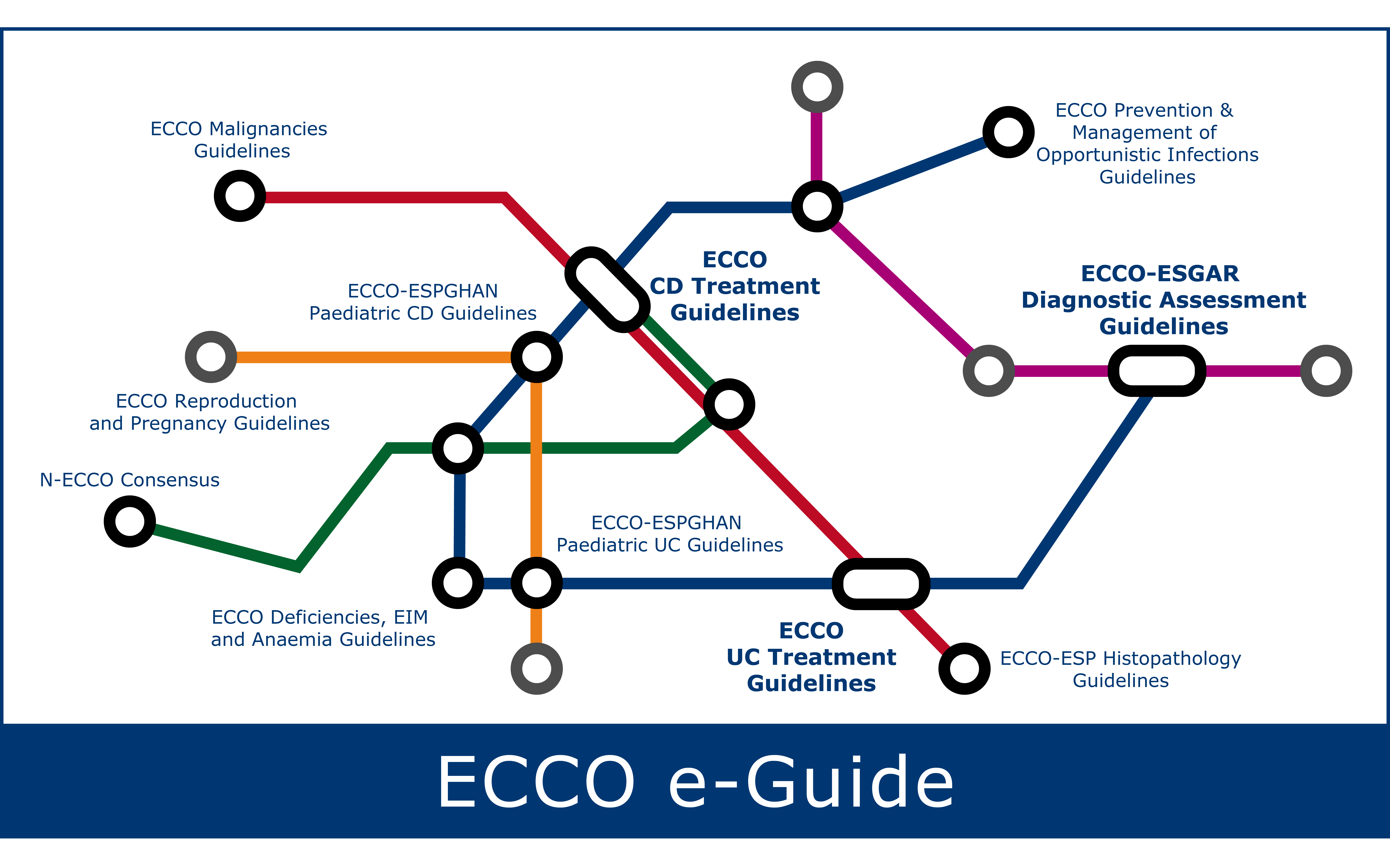The information below is based on the summary of product characteristics approved by regulatory authorities. For full details from the SmPC, please click here: https://www.medicines.org.uk/emc/product/1740/smpc#PRODUCTINFO; ECCO Consensus on UC, 2017; ECCO Consensus on Crohn’s Disease 2013; ECCO Toolkit
Additional related ECCO e-Learning resources can be found under IBD Curriculum Topic 6.1-6.11
Introduction and Mechanism of Action
Budesonide is considered as a low-bioavailability steroid with similar efficacy than systemic steroids in mild-to-moderate Crohn’s disease limited to the ileum and/or the right colon. The exact mechanism of budesonide in the treatment of Crohn's disease is not fully understood. Budesonide is a glucocorticosteroid with a high local anti-inflammatory effect. At doses clinically equivalent to systemically acting glucocorticosteroids, budesonide gives significantly less HPA axis suppression and has a lower impact on inflammatory markers.
Therapeutic indications
Budesonide is appropriate for the induction of remission in patients with mild to moderate active Crohn's disease affecting the ileum and/or the ascending colon.
Dosing, administration
The recommended daily dose is 9 mg/day for 8 weeks. Then taper gradually to zero within 8-10 weeks depending on response.
Contraindications
Hypersensitivity to the active substance
Hepatic cirrhosis
Adverse effects
Common
- Cushing's syndrome: e.g. with moon face, truncal obesity, reduced glucose tolerance, diabetes mellitus, hypertension, sodium retention with oedema, increased potassium excretion, inactivity or atrophy of the adrenal cortex, red striae, steroid acne, disturbance of sex hormone secretion (e.g. amenorrhoea, hirsutism, impotence)
- Dyspepsia, abdominal pain
- Increased risk of infection
- Muscle and joint pain, muscle weakness and twitching, osteoporosis
- Headache
- Depression, irritability, euphoria
- Allergic exanthema, petechiae, delayed wound healing, contact dermatitis
Rare
- Glaucoma, cataract, blurred vision
- Pancreatitis
- Osteonecrosis
- Aggression
- Ecchymosis
Very rare
- Growth retardation in children
- Constipation
- Pseudotumor cerebri including papilloedema in adolescents
- Increased risk of thrombosis, vasculitis (withdrawal syndrome after long-term therapy)
- Fatigue, malaise
Laboratory parameters and Monitoring
No particular parameters or monitoring strategies are recommended. Systemic steroid side effects may still occur but these are significantly less frequent than with prednisolone. Mood changes may occasionally occur and may necessitate therapy cessation.
Interactions with other Drugs
Pharmacodynamic interactions
- Cardiac glycosides: the action of the glycoside can be potentiated by potassium deficiency.
- Saluretics: potassium excretion can be enhanced.
Pharmacokinetic interactions
- Co-treatment with CYP3A inhibitors is expected to increase the risk of systemic side-effects
- Compounds or drugs such as carbamazepine and rifampicin, which induce CYP3A4, might reduce the systemic but also the local exposure of budesonide at the gut mucosa. An adjustment of the budesonide dose might be necessary.
- Compounds or drugs which are metabolized by CYP3A4 might be in competition with budesonide. This might lead to an increased budesonide plasma concentration if the competing substance has a stronger affinity to CYP3A4, or – if budesonide binds stronger to CYP3A4 – the competing substance might be increased in plasma and a dose-adaption/reduction of this drug might be required.
- Potential interactions with steroid-binding synthetic resins such as cholestyramine and with antacids cannot be ruled out. These preparations should not be taken simultaneously, but at least two hours apart.
Special situations (e.g. pregnancy)
Pregnancy
Administration during pregnancy should be avoided unless there are compelling reasons for therapy with budesonide. There are few data of pregnancy outcomes after oral administration of budesonide in humans. The maximal concentration of budesonide in plasma has to be expected to be higher in the treatment with oral budesonide compared to inhaled budesonide. In pregnant animals, budesonide, like other glucocorticosteroids, has been shown to cause abnormalities of foetal development. The relevance of this to man has not been established.
Breast-feeding
Budesonide is excreted in human milk (data on excretion after inhalative use is available). However, only minor effects on the breast-fed child are anticipated after budesonide intake within the therapeutic range. A decision must be made whether to discontinue breast-feeding or to discontinue/abstain from budesonide therapy taking into account the benefit of breast-feeding for the child and the benefit of therapy for the woman.
Fertility
There are no data on the effect of budesonide on human fertility.

